The week at a glance:
- Iberian Yellow Wagtail in Wales
- Black-eared Kite in Norfolk
- Little Crake still in Devon
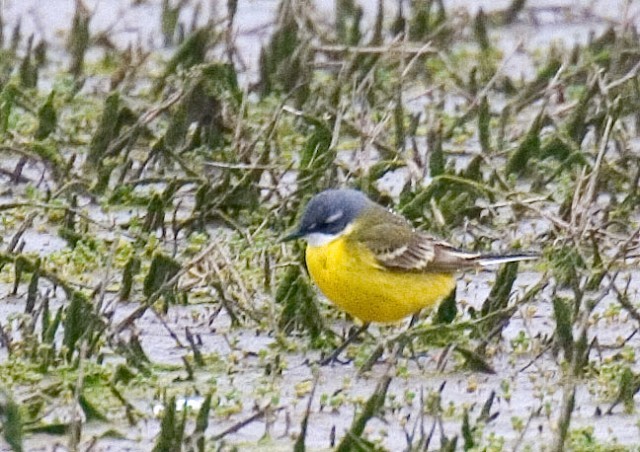
Presumed Iberian Yellow Wagtail, Conwy RSPB, Conwy (Photo: Adrian Foster)
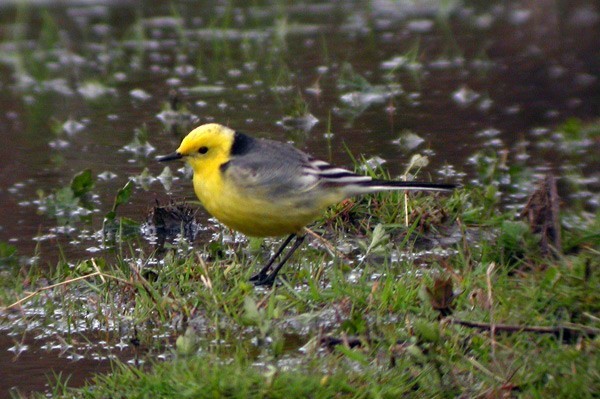
Citrine Wagtail, Conwy RSPB, Conwy (Photo: Marc Hughes)
It was very much a case of "the morning after the night before" this week with the remarkable double-header of "mega" larks always going to be hard to beat. The effort was most certainly there, but despite one of the warmest days of the year so far adding more than a little southern flair to the week's proceedings, a few birding folk out there felt as though the glass was more half empty than half full, despite there being a potential British first on the cards...and the bird in question was a very handsome male (presumed) Iberian Yellow Wagtail - the form iberiae - (Spanish Wagtail in old money) at Conwy RSPB from 27th to 30th. If accepted, this would be the first British record of the form but all the usual caveats apply - the spectre of hybrids and intergrades (particularly with Ashy-headed Wagtail and also Blue-headed Wagtail) are issues to be wary of, but this bird looks very like an Iberian, and observers have also noted the crucial "buzzy" call typical of the "southern" Yellow Wagtails. This individual is surely one for the committees who have already seen off one claim recently...and if that wasn't enough, a male Citrine Wagtail was found at the same site on 30th! It's that whole Patagonia Rest Stop scenario all over again! In Norfolk, a Black-eared Kite was identified heading south over Eccles-on-Sea early on the morning of 24th. After a couple of "possible" sightings elsewhere in east Norfolk, it was then seen again over Bacton later the same day, and what was presumably the same bird then appeared over Horsey on 26th, with a Black Kite and three Red Kites also close by! A remarkable trio, but tainted (once more) by the rumour that one of the escapees from London Zoo was reported as being a lineatus (the other three were apparently of the nominate form). Those wishing to pop a positive spin on the situation have put forward the argument that it may be the wintering youngster of 2006/07 returning to the county it eventually made home. Stranger things have happened.... What may have been the same Black-eared Kite was also seen drifting west over Incleborough Hill (near West Runton) and Langham later on 26th. In Devon, rather less controversial, was the male Little Crake, which remained at Exminster Marshes RSPB to 24th. Also of note, a Zitting Cisticola was seen on Alderney (Channel Islands) on 27th.
An adult summer White-billed Diver was seen at Burghead (Moray) on 24th, and again on 30th, while another summer adult flew past Dungeness (Kent) on 26th. Two White-billed Divers were noted again off Port Skigersta, Lewis (Outer Hebrides) on 28th-30th. Five Balearic Shearwaters were seen off Dawlish Warren NNR (Devon) on 27th. Around 100 Pomarine Skuas were noted this week, with several double-figure counts, the highest being 40 past Dungeness (Kent) on 27th. Also on 27th, 22 flew past Splash Point, Seaford (East Sussex), with 15 off Samphire Hoe CP (Kent) and 10 off Birling Gap (East Sussex) on the same day. At least 14 Pomarine Skuas were also seen off Milford-on-Sea (Hampshire) on 30th. Eleven birds were seen passing Bowness-on-Solway (Cumbria) on 24th. A Long-tailed Skua was seen from Spurn (East Yorkshire) on 26th over the Humber before heading east.

Cattle Egret, Chysauster, Cornwall (Photo: anon)
On the Isles of Scilly a Cattle Egret arrived on St. Mary's on 26th, remaining to 27th at least, while a little further to the north east, around the west of Cornwall, decent numbers of Cattle Egrets could still be found throughout the week - almost all of them around Sancreed, New Mill and Chysauster, with 16 the maximum single tally (at New Mill on 25th). Two more were also seen on the Hayle Estuary on 25th. Four birds remained around the Fremington, Bickington and Penhill area in north Devon to 25th, while in south Devon, five birds lingered at Tamerton Foliot to 30th. In Dorset, single birds were still being seen at Abbotsbury to 27th and Lytchett Bay to 30th, while two Cattle Egrets were seen at Lodmoor RSPB on 26th-27th. Two birds were at Lancing (West Sussex) on 25th-27th, with two more flying over Pagham Harbour (West Sussex) on 27th. The duo also remained around Frampton-upon-Severn (Gloucestershire) to 30th at least. Single birds at Llandre (Ceredigion) and Hoylake (Cheshire) remained to 27th and 29th respectively, while on 27th, single birds were seen at Burnham Norton (Norfolk) and Brean Down (Somerset). In Ireland, five birds were seen at Tramore (Co. Waterford) on 27th with, also in Waterford, six at Clohemagh on 28th. A lone Cattle Egret was still at Johnstown Castle (Co. Wexford) on 27th.

Common Crane, Uyeasound, Unst, Shetland (Photo: Mike Pennington)

White Stork, North Ronaldsay, Orkney (Photo: Kevin Woodbridge)

Little Bittern, Brownstown Head, Waterford (Photo: Tom Shevlin)
The two Great White Egrets at Loch of Strathbeg (Aberdeenshire) stayed until 24th, with single birds seen at Cresswell Pond (Northumberland) on 25th and at Abberton Reservoir (Essex) on 26th (with the same bird being seen the following day at Hanningfield Reservoir). Another Great White Egret was seen on the Isle of Man, at Peel on 26th-27th. Some 30 Spoonbills were seen around the country during the past week, with a maximum of 10 at Middlebere (Dorset) on 25th-26th. On 24th, a single Spoonbill was seen at Flamborough Head (East Yorkshire) - not a typical location for the species. The now-resident Glossy Ibis remained at Warton Marsh (Lancashire) to 29th, while Common Cranes included a dozen at Horsey (Norfolk) on 25th and two birds were still on Unst (Shetland) to 28th. Also on 24th, singles were seen at Woolmer Pond (Hampshire), Unstead SF (Surrey) and Fortrose (Highland). On 25th, a Crane flew over Wheldrake Ings YWT (North Yorkshire), and on 26th, in Norfolk, a single bird drifted over High Kelling and Incleborough Hill, with another appearing over Breydon Water later the same day. On 27th, one was seen on Orkney, at Deerness, while another Crane flew over Minsmere RSPB (Suffolk) on 28th and one was over Oare Marshes NR (Kent) on 29th. Scotland dominated the records of White Stork this week. On 25th, one was seen over Kirkcaldy (Fife), while the following day, 26th, saw one over Dunbar (Lothian) and three were seen at Lhanbryde (Moray) before (surely!) the same trio appeared on North Ronaldsay, where they remained until late morning of 27th. This roving trio then headed back to mainland Scotland on 28th, alighting in the Highlands, near Lairg, and remaining there to 29th. A White Stork was seen at Reston (Borders) on 27th, with perhaps the same bird then moving across in to England, appearing at Bockenfield (Northumberland) on 28th. A bird over Acle (Norfolk) on 26th sadly has to fall into the "of unknown origin" category. An adult Purple Heron was seen at Trimley Marshes SWT early on the morning of 24th, but wasn't seen the following day. Another adult Purple Heron was seen at Arlington Reservoir (East Sussex) on 29th with a Night Heron also in the county on the same date, at Pevensey Levels. Star turn though in the "heron" department this week has to be the gorse-bush-dwelling Little Bittern on Brownstown Head (Co. Waterford) on 26th. What a sight!

American Wigeon, Rother Valley CP, South Yorkshire (Photo: Darren Ward)

King Eider, Flamborough Head, East Yorkshire (Photo: Steve Race)
Those two Ross's Geese still don't want to go...! In Lancashire, the lingering individual at Pilling Lane End was still in place to 29th at least, while in Perth & Kinross, one was again at Loch Leven RSPB on 25th. An adult Black Brant was still to be found at Cley Marshes NWT to 24th (now paired with a Dark-bellied Brent Goose...) and was, once again, the only Brant of the week. In County Donegal, a drake Black Duck was again at Blanket Nook, Lough Swilly on 24th-27th (having appeared there on 19th) and the female was still at Marloes Mere (Pembrokeshire) to 27th. The drake American Wigeon remained at Rother Valley Country Park (South Yorkshire) from 24th-29th, while eleven Green-winged Teal included two birds at Spurn (East Yorkshire) on Long Bank Marsh on 27th, and two birds in Lancashire (at Marshside RSPB to 25th and Leighton Moss RSPB on 26th-28th) while new birds were seen on Orkney, at Loch of Hundland, Mainland, on 24th-28th and perhaps the same bird was then seen at Shapinsay on 30th. Another new drake was at the National Wetlands Centre (Carmarthenshire) on 30th. Leftovers included singles at Hook-with-Warsash (Hampshire) and Eyebrook Reservoir (Leicestershire), while Irish birds remained at Lurgan Green (Co. Louth) on 24th-26th, Shannon Airport Lagoons (Co. Clare) to 27th and at Ashton's Callow NR (Co. Tipperary) on 28th. Also in Ireland, a drake Blue-winged Teal was discovered in County Tipperary, at Reddan's Lough on 25th. Three drake Lesser Scaup were on offer this week: on 24th, two birds were seen in Scotland, at Bridge of Allan (Forth) and Auchenreoch Loch (Dumfries & Galloway), while in Somerset, the drake reappeared at Chew Valley Lake on 25th-30th. There were three or four Ring-necked Ducks to report: a female was seen at Balranald RSPB, North Uist (Outer Hebrides) on 24th and a male was on Lough Ourna (Co. Tipperary) on 25th-27th (and perhaps the same bird then moved to Reddan's Lough on 29th). Another was seen at Blanket Nook, Lough Swilly (Co. Donegal) on 27th. The first-winter drake King Eider was still at Northam Burrows CP (Devon) to 24th, while the adult drake was at Girvan (Ayrshire) to 26th. Perhaps the biggest surprise of the week was an English adult drake King Eider, one found off the North Landing, Flamborough Head (East Yorkshire) on 24th, staying to 29th. A drake Surf Scoter remained in Largo Bay (Fife) on 24th.

Black Kite, Aldeby Landfill Site, Norfolk (Photo: Andrew Easton)
On North Uist in the Outer Hebrides, a white Gyr was noted again on 29th, at Paiblesgarry. A relatively early female Red-footed Falcon was seen well just to the east of Cley village (Norfolk) on 26th - the bird had earlier been seen heading west from Weybourne station and was then seen over Langham, heading east, an hour or so later. What was presumed to be the same bird was seen over Kelling Water Meadows on 29th. Also in Norfolk, came four reports of Rough-legged Buzzard: one over Blickling on 24th, and singles over Horsey and Waxham on 25th and 26th, with another bird noted around Holkham and Burnham Overy on 30th. Another "Rough-leg" was seen at Scaling Dam Reservoir (Cleveland) on 28th-29th. With Black Kites this week it is pretty tough trying to work out just how many birds there have been! Norfolk has bagged several sightings (including one previously seen in Suffolk) - one was seen around the area between Sea Palling and Waxham from 24th-28th (along with the Black-eared Kite on 26th). On 24th-26th one was seen at Aldeby (and there were reports of a hybrid Black Kite also being present there) and another was at Sculthorpe Moor LNR, near Fakenham on 26th-27th (though this too was mooted as a hybrid by some observers). Also on 27th, Black Kites were seen over Winterton and Hopton-on-Sea. In Suffolk, singles were seen at Boyton Marshes on 24th and 26th, when others were seen at Oulton, Minsmere RSPB and Herringfleet (which was different to the bird just over the border at Aldeby). On 27th, more Suffolk Black Kites were seen over Beccles and Trimley St. Mary, with one over Lowestoft the following day. Away from East Anglia, a Black Kite was seen at Puttenham (Surrey) on 25th, while in Kent, on 26th, sightings came from Reculver, Hillborough, St. Margaret's at Cliffe and Kingsdown (then later over Deal). In Northamptonshire, one was noted again near Thrapston on 27th, with another Black Kite seen on 29th, this one in Cambridgeshire, near Huntingdon. At least nine Honey Buzzards were seen during the week, from Cornwall to Norfolk.

Black-winged Stilt, Kenfig Pool NNR, Glamorgan (Photo: Steve Hinton)

Dotterel, Lowther Hill, Clyde (Photo: Ian Fulton)
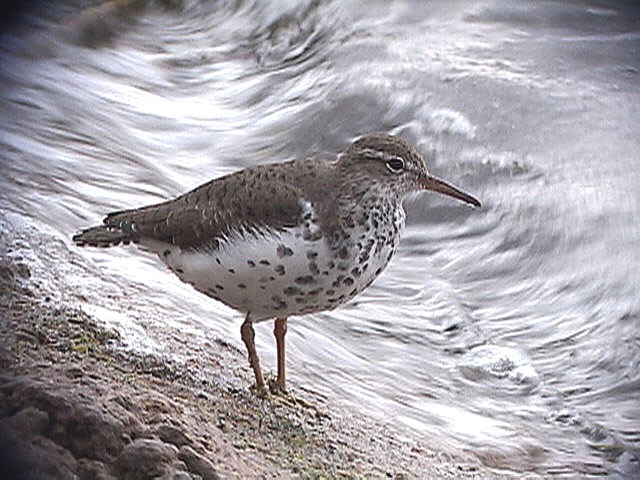
Spotted Sandpiper, Lisvane Reservoir, Glamorgan (Photo: Philip John Parsons)

Lesser Yellowlegs, Swine Moor, East Yorkshire (Photo: Martin Standley)

Kentish Plover, Langness, Isle of Man (Photo: Pete Hadfield)
A pair of Black-winged Stilts were popular visitors to Neumann's Flash (Cheshire) from 25th-29th and breeding behaviour was noted (and photographed too). A lone Black-winged Stilt flew over Kenfig Pool NNR (Glamorgan) on 27th, then returned there late in the day on 28th, and remained until 30th. Over 50 Dotterel were found this week, and included double-figure trips in Norfolk: 13 at Acle on 26th and 15 at Choseley on 27th. Eight were seen at Southminster (Essex) on 26th, six were at Plex Moss (Lancashire) on 27th, five were at Penicuik (Lothian) on 28th, while four were inland at Bury Down (Berkshire) on 25th. Others were seen in Cambridgeshire and East and West Yorkshire. The first-summer Spotted Sandpiper remained at Lisvane Reservoir (Glamorgan) to 28th at least, while in East Yorkshire, the Lesser Yellowlegs was still at Swine Moor from 24th-26th, and in Ireland, the wintering bird was at Rosscarbery (Co. Cork) on 26th. A new arrival was the Lesser Yellowlegs on Porth Hellick Pool, St. Mary's (Scilly) on 30th. A Pectoral Sandpiper was found at Grindon Lough (Northumberland) on 26th-27th, with another being found at Lough Beg (Co. Derry) on 27th-28th. A Kentish Plover at Langness (Isle of Man) on 24th was a good find on the island, while the second Kentish Plover of the week was found at Pagham Harbour LNR (West Sussex) on 27th, staying until early morning of 28th. A Temminck's Stint was at Pett Levels (East Sussex) on 25th and two were at Minsmere RSPB (Suffolk) on 28th-29th.
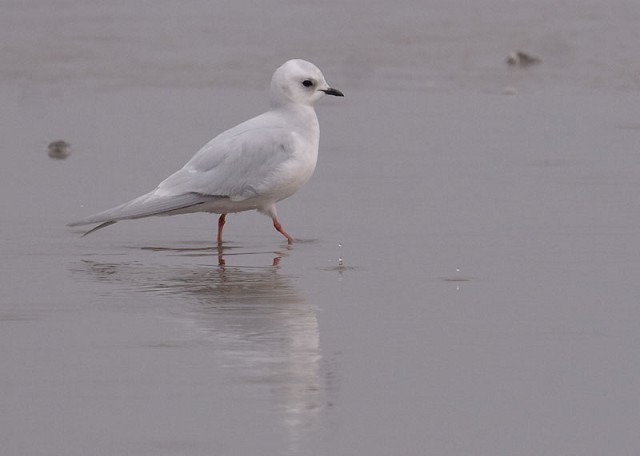
Ross's Gull, Granny's Bay, Lancashire (Photo: Marcus Conway)

American Herring Gull, Galway, Galway (Photo: Tom Cuffe)
The adult Bonaparte's Gull remained at Dingle (Co. Kerry) to 26th, and the adult on South Uist (Outer Hebrides) remained to 27th. On 28th, a Bonaparte's Gull was seen at Kinnegar and Belfast Lough RSPB (Co. Antrim), while in Lancashire, the scrumptious adult Ross's Gull often performed wonderfully to all comers, to 30th, providing some awesome photographic opportunities. A first-summer Caspian Gull was seen at Benacre (Suffolk) on 26th, and was the only record of the species this week. A first-summer Ring-billed Gull was seen on the Hayle Estuary from 24th-28th, with another new first-summer being found at Belfast Lough RSP (Co. Antrim) on 27th. The first-year bird remained at Lamby Lake (Glamorgan) to 26th and the adult Ring-billed Gull was still being seen on Loch Sandray, North Uist (Outer Hebrides) to 30th. The first-year American Herring Gull continued to be seen around Nimmo's Pier and Galway Docks to 28th at least, while just four Glaucous Gulls were reported, in Northamptonshire, Cleveland, Angus and Galway. Around 20 Iceland Gulls lingered towards May, with at least four still at Mallaig (Highland) on 25th-29th, and three birds were at Portrush (Co. Antrim) on 24th. The adult Forster's Tern was still at Killyleagh harbour, Strangford Lough (Co. Down) on 26th-27th, while in Kent, one of those dreaded "orange-billed" terns was seen over Stodmarsh NNR on 25th. No problems in terms of identification for the extremely handsome Whiskered Tern found at Holkham Freshmarsh NNR (Norfolk) on 28th, a first for the site to boot. On 29th, an excellent tally of 16 Roseate Terns flew past Stokes Point, Gosport (Hampshire) in just an hour.

Red-rumped Swallow, Swallow Pond, Northumberland (Photo: Brian Bullough)

Pallid Swift, St. Agnes, Isles of Scilly (Photo: Robin Mawer)

Hoopoe, Bucknell, Shropshire (Photo: Jim Almond)

European Bee-eater, Loch of Stenness, Mainland, Orkney (Photo: Jim Williams)
Four Red-rumped Swallows were noted this week: one flew over Appledore (Devon) on 24th, one was seen over Waxham (Norfolk) on 27th, on 28th-29th one was seen at Swallow Pond, near Wallsend (Northumberland), with the quartet rounded off with a bird at Abberton Reservoir (Essex) on 30th. On St. Agnes (Scilly) a Pallid Swift was seen during the late afternoon and evening of 28th, and was then seen over Peninnis Head, St. Mary's the following afternoon, before returning across the water to St. Agnes. The bird was still present there to 30th. A possible Pacific Swift was seen flying over Landguard NR (Suffolk) on 26th, but a little easier to get to grips with are Hoopoes, and it was another good week for them, with at least 20 birds reported. Of these, two remained on Cape Clear Island (Co. Cork) to 24th, and a single bird remained on the Isle of May (Fife) from 24th-26th. Also of particular note were birds at Flodigarry, Isle of Skye (Highland) on 24th, Abernethy (Perth & Kinross) on 27th, at Plocrapol, Harris (Outer Hebrides) on 29th and in Ireland, a Hoopoe was seen at Enniscorthy (Co. Wexford) on 28th. Along with the Hoopoe, you really know that spring has well and truly announced its presence when Bee-eater makes the news, and this week saw the first birds of the year appear. Three birds flew over the Land's End complex (Cornwall) on the morning of 26th, and in the afternoon of the same day, nine birds flew over Watchet (Somerset). Surely that flock won't go missing for long? On 27th, the three birds in west Cornwall were relocated at Cot Valley, with four more flying over Wimborne Minster (Dorset) while another Bee-eater performed a fly-past at Dinas Head (Pembrokeshire). On 28th, Orkney birders had chance to enjoy one of these always sensational visitors, one appearing at Voy, Mainland, and another was heard over Culverwell (Dorset). The final Bee-eater of the week was seen briefly on Dursey Island (Co. Cork) on 29th.
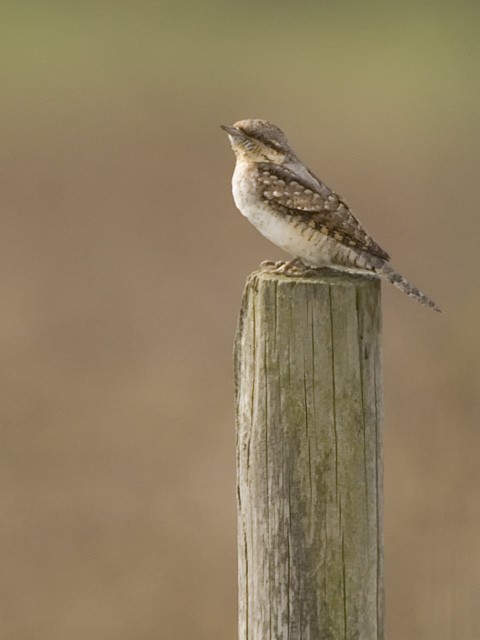
Wryneck, Waxham, Norfolk (Photo: Paul Hill)
Wrynecks this week included a bird at Bolt Head (Devon) on 25th, one or two birds around Horsey and Waxham (Norfolk) on 26th, when one was also seen in East Sussex, at Fairlight Cove. Way to the north, a Wryneck was seen at Johnshaven (Aberdeenshire) on 27th. A Tawny Pipit was found at Witham (Essex) on 25th, but appeared not to stay for too long, while birders searching for the Little Bittern on Brownstown Head (Co. Waterford) found a Tawny Pipit on 27th. The third Tawny Pipit of the week was found at Flamborough Head (East Yorkshire) on 28th, and was reported there again on 29th. On 27th, a Richard's Pipit was found at Rainham Marshes RSPB and was still present on 28th. At Ballycotton (Co. Cork), a Short-toed Lark was seen on 27th. A couple of late snippets from Ireland: a Bluethroat was seen at Tramore (Co. Waterford) on 21st-22nd and a three-day Waxwing was in a garden at Lisburn (Co. Antrim) on 21st-23rd.
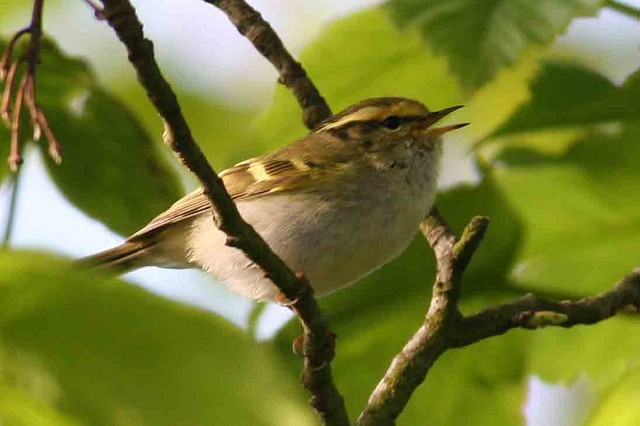
Pallas's Warbler, St. Agnes, Cornwall (Photo: Mike Barker)
The singing male Pallas's Warbler remained at St. Agnes (Cornwall) from 24th-25th. A male Subalpine Warbler was found on St. Agnes (Scilly) on 26th, and the following day saw a Western-race male appear on nearby St. Mary's. Also on 27th, another male Subalpine Warbler was found on the Farne Islands (Northumberland), along with a Yellow-browed Warbler. Perhaps more of a surprise was the early Icterine Warbler found at Portland Bill (Dorset) on 24th.

Woodchat Shrike, Helston Loe Pool, Cornwall (Photo: Brian Mcgeough)

Great Grey Shrike, Risby Warren, Lincolnshire (Photo: Richard Jackson)
The year's first Golden Oriole was seen briefly at Sancreed (Cornwall) on 26th, with further singles appearing the following day, also in Cornwall, at Porthcurno, Lizard village and St. Leven. On 28th, a Golden Oriole was seen on Bryher (Scilly) and was still present there on 29th. Cornwall was also responsible for the year's first Woodchat Shrike to arrive too - a female was at Land's End on 26th, and was still present on 29th. The 27th saw two more Woodchats arrive in the far southwest: a male at Helston Loe Pool (still present on 30th) and another female, on Bryher (Scilly) also still in place to 29th at least. Another "first of the year", at the other end of the country, was a male Red-backed Shrike, found on Mainland Orkney, also on 26th, at Backatown. Seven Great Grey Shrikes, heading away from us presumably, included birds between Hunstanton and Heacham (Norfolk) on 24th and again on 26th, with another Norfolk bird at Happisburgh on 26th. In the Northern Isles, singles were seen on Orkney, at Cara, South Ronaldsay on 25th-26th and on Shetland, on Noss, on 25th. A Great Grey Shrike spent 27th-30th at Risby Warren (Lincolnshire) and one appeared at Harthope Valley (Northumberland) on 29th. Finally this week, Serin records included fly-over birds at Stanpit Marsh (Dorset) on 25th and at St. Margaret's at Cliffe (Kent) on 27th, while singing males were in the Observatory garden at Portland Bill (Dorset) and at Steart (Somerset), both on 27th, with the Portland bird remaining until 30th (albeit rather mobile). On 28th, more Serins were noted at Waxham (Norfolk), Lowestoft (Suffolk) and Tetney Marshes (Lincolnshire).
Photo of the Week

Black-headed Gull, Summer Leys LNR, Northamptonshire (Photo: Neil Khandke)
In areas where a particular bird species is common, it is often under-rated. Black-headed Gulls in full breeding plumage are impressive birds that are often overlooked in the UK. Their nesting sites are a hive of activity and can be incredibly noisy places, but provide many opportunities for great action shots. Using a high shutter speed to freeze a pair of gulls just above the ground, Neil Khandke has captured a perfect instant in their interaction, with dynamic poses and strong eye contact. The challenging exposure conditions have also been handled adeptly. One of the biggest problems of photographing birds in colonies, though, is isolating the subjects from neighbouring birds, which can often make the image 'messy'. In this case, the onlooking bird in the bottom corner could easily have been edited out, but Neil made the right decision to leave it in, as it adds a sense of intimacy and makes you feel as though you are part of the colony.
Other notable photos
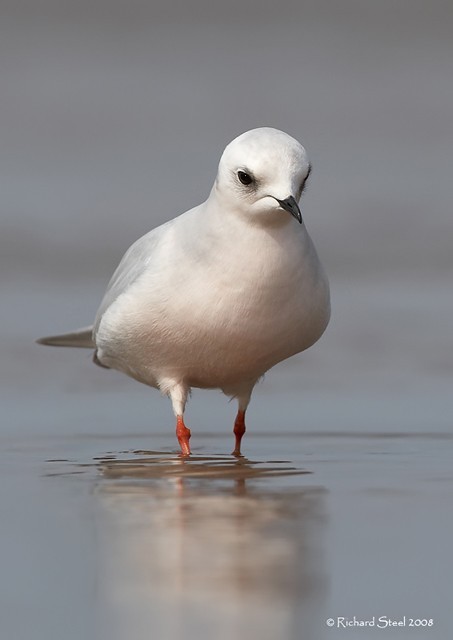
Ross's Gull, Lytham St. Annes, Lancashire (Photo: Richard Steel)

Long-eared Owl, undisclosed site, Cambridgeshire (Photo: Garth Peacock)
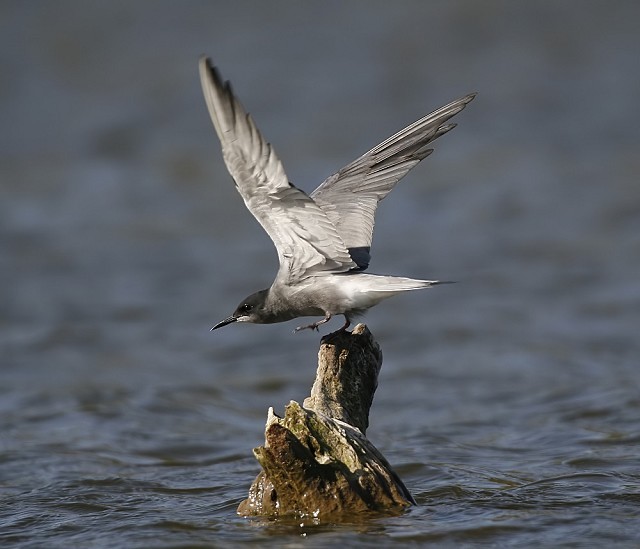
Black Tern, Seeswood Pool, Warwickshire (Photo: Dave Hutton)

Black-necked Grebe, Netherlands (Photo: Rudi Debruyne)

Montagu's Harrier, Spain (Photo: Steve Fletcher)

Tree Pipit, Black Hill, Shropshire (Photo: Jim Almond)

Spotted Flycatcher, Bahrain (Photo: Adrian Drummond-hill)
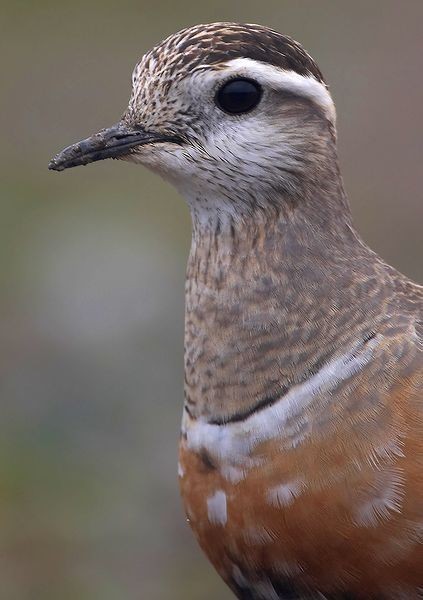
Dotterel, Soil Hill, West Yorkshire (Photo: Sean Gray)

Common Kestrel, North Wirral CP, Cheshire (Photo: Richard Steel)

European Bee-eater, Spain (Photo: Steve Fletcher)

Gannet, Fife Ness, Fife (Photo: John Anderson)

Common Sandpiper, Shillmoor, Northumberland (Photo: David Cookson)

Lapwing, Nocton Fen, Lincolnshire (Photo: Matt Latham)

Wryneck, Johnshaven, Aberdeenshire (Photo: Micky Maher)

Common Redstart, Forest of Dean, Gloucestershire (Photo: Chris Grady)

Nightingale, Paxton Pits NR, Cambridgeshire (Photo: Garth Peacock)
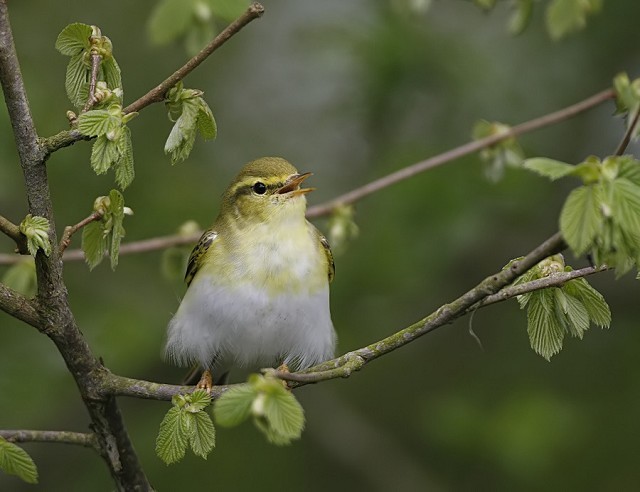
Wood Warbler, Seeswood Pool, Warwickshire (Photo: Dave Hutton)

Yellowhammer, undisclosed site, Cheshire (Photo: Pauline Greenhalgh)
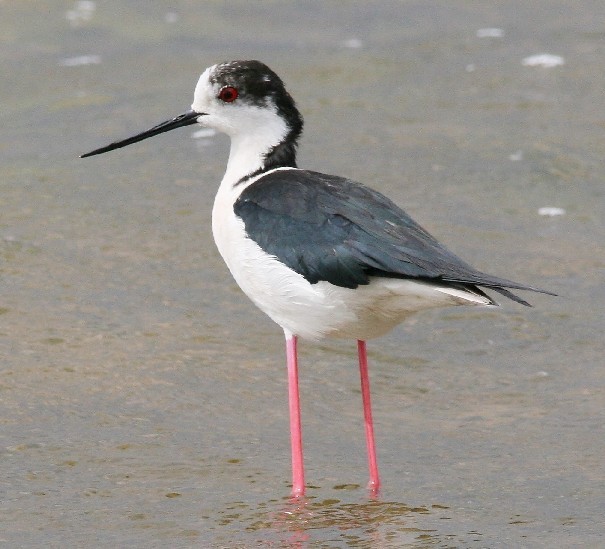
Black-winged Stilt, Kenfig Pool NNR, Glamorgan (Photo: Richard Smith)

Hoopoe, Bucknell, Shropshire (Photo: Jim Almond)

